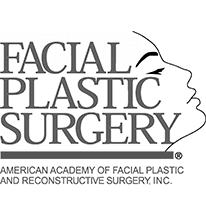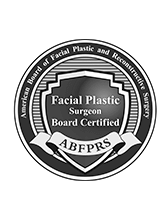Hair
Restoration
in NYC
What is Hair Restoration
Thick, luxurious hair is often a hallmark of youth, serving as both a feature of vitality and a personal statement of style. So, when hair begins to thin or the hairline starts to recede, it can affect not only appearance but also self-confidence. Fortunately, at ESK, you can restore all of that—and more—with one of the finest hair restoration in NYC.
There are several reasons for hair loss, although the most common one is androgenetic alopecia, or male/female pattern baldness. This is the result of aging, genetics and sometimes hormonal factors.
Hair transplants can help reverse the negative effects of hair loss and cosmetically revitalize the hairline. Thousands of patients have successfully undergone hair transplants in cases where non-surgical means failed to produce adequate results. When other “quick fixes” haven’t produced a significant improvement, it may be time to consider a hair transplant for long-lasting, natural hair growth in thinning or balding areas.
Understanding Hair Loss
Hair loss is a common condition that affects millions of men and women, often starting subtly with thinning and gradually progressing to more visible baldness. It can be triggered by a range of factors, including age, hormonal shifts, medical conditions, and genetics. Among the most common causes is androgenetic alopecia (also known as male pattern baldness), which is hereditary and leads to gradual shrinking of hair follicles over time.
Hair grows in a natural cycle made up of three key phases: Anagen (growth), Catagen (transition), and Telogen (resting). As we age, or due to genetic and hormonal influences, this cycle can become disrupted. The growth phase shortens while the resting phase lengthens, causing follicles to produce finer, weaker hairs, or stop producing hair altogether. Over time, this results in noticeable thinning or bald spots, particularly in areas most affected by hereditary hair loss.
The good news is that not all hair follicles are affected by thinning or loss. Many areas of the scalp continue to produce healthy, dense hair, which makes hair restoration in New York a viable and effective solution. These healthy follicles can be carefully transplanted to areas of thinning or baldness, allowing procedures like hair restoration surgery to deliver natural, long-lasting results for those seeking fuller, more youthful-looking hair.
A Lasting SolutionHair Transplant Surgery
For those seeking a permanent and natural-looking solution to hair loss, hair restoration surgery remains one of the most effective and confidence-boosting treatments available. By using your own healthy follicles—typically from areas unaffected by hair loss—surgeons can restore growth in thinning or bald areas. The result is real, healthy hair that blends seamlessly with the rest of your scalp.
Today’s advanced surgical techniques, including FUE (Follicular Unit Extraction) and FUT (Follicular Unit Transplantation), offer highly effective options tailored to each individual. Dr. Kwak will carefully evaluate your level of hair loss and recommend the method best suited to your goals, ensuring the most natural and lasting outcome possible.
FUE
FUE (Follicular Unit Extraction) is a process where hair follicles from a donor area such as the back of the scalp are grafted onto the hairline via a specialty engineered device. The transplanted follicles are grafted gradually from front to back, ensuring a natural progression that mimics the organic hair growth process.
Patients are provided with local anesthetic so little-to-no pain is experienced. FUE takes approximately 5-10 hours to perform, depending on the number of grafts needed.
FUT
FUT (Follicular Unit Transplantation), also called the “strip” method, involves removing strips of follicles from the donor site, creating grafts of 1-4 hairs and then placing them across the hairline via micro-incisions. Sutures are then used in the donor area to close the gaps. The transplanted follicles then enter the Telogen (resting) phase, but can soon resume their normal Anagen (growth) phase, and will continue to grow just like normal hair does.
Like with FUE, local anesthetic is provided so minimal pain is experienced. FUT usually takes 2-6 hours to perform.

The Procedure
The hair transplant process begins with the application of local anesthesia to keep you comfortable throughout the procedure. Once the area is numb, healthy hair follicles are carefully extracted from parts of the scalp with strong, consistent growth.
After extraction, each follicular unit is examined under a microscope for quality, trimmed if necessary, and kept in a chilled solution to maintain hydration. Grafts are then sorted by hair count, with single-hair grafts placed along the hairline and multi-hair grafts used in areas where more density is desired.
The surgeon then creates tiny micro-incisions in the area being restored and meticulously implants each follicle to follow your natural hair growth pattern. Whether you choose FUE or FUT will influence the details and duration of the procedure, but both methods offer precise placement and natural, long-lasting results. In some cases, a follow-up session may be recommended for added density or to address continued hair loss.
What are costs and risks of getting a hair transplant?
The cost of hair restoration in Manhattan can vary based on the patient’s individual needs and their desired results, but in general, the price range for a hair restoration procedure is $4,000-$15,000. Dr. Kwak offers personalized consultations to discuss treatment options and associated costs, ensuring patients receive the most effective and affordable solution for their unique situation. We carry out comprehensive assessments of every patient’s scalp in order to determine the best course of action for their issues.
As with any procedure, hair transplants come with some potential risks, such as minor bleeding, infection, or occasional scarring. However, these are uncommon and typically manageable with proper care. When then new hair starts growing out, some people experience infection or inflammation in their hair follicles (folliculitis). But antibiotics and compression can easily relieve this problem. It is a good idea to consult your doctor regarding the risks involved in a hair transplant and the extent of improvement you will likely notice after the surgery is completed.
While there may be multiple products promising increased hair volume and greater hair growth, most of them are ineffective. The ideal way to increase or add hair to a scalp area is to opt for a hair restoration procedure.
Recovery from hair restoration
Hair restoration clients do not generally experience any discomfort. Hair transplantation is considered one of the most gentle and non-invasive outpatient procedures. After surgery, do not wash your hair for at least 24-48 hours, as this may damage the new follicles. It’s also a good idea to avoid excess exposure to the sun, and to keep rigorous exercise at a minimum for the first week or two of recovery. To minimize the risk of infection or irritation, take care not to pick at the healing scalp.
Clients can expect to see significant new hair growth at around 10-14 weeks. Occasionally multiple transplant sessions are needed to achieve the look you want, based upon the degree of your hair loss, and the restoration needed. We provide our patients with detailed aftercare instructions to speed healing, and help your new hair follicles to start producing hair.
If you should need any assistance or have questions during the weeks following your hair transplant, do not hesitate to contact Dr. Kwak at his Manhattan office directly.

Why Should Clients Choose ESK MD
At ESK in New York, our primary focus is on the head, neck and face. Dr. Kwak is double board certified in facial plastic surgery and otolaryngology, and has spent the majority of his career enhancing and improving these delicate and highly visible areas. Dr. Kwak is known for his skillful, discerning eye and aesthetic artistry. He is always careful to cater to the individual rather than perform generic operations that produce banal outcomes.
During your initial consultation, Dr. Kwak will examine your scalp, ask questions about what other strategies or medications you have tried in relation to hair loss, and listen as you describe your goals for the procedure. The doctor will then present a fully detailed treatment plan outlining the method of hair transplant he will use and what to expect at every stage of your surgery. Most of our NYC hair restoration patients find that Dr. Kwak instantly sets them at ease, and is able to respond candidly to all concerns and questions.
Get StartedHair Transplant FAQs
Is a Hair Transplant Painful?
No, with the use of local anesthetics there should only be minor discomfort, primarily when applying the anesthetic.
What Does Hair Transplant Procedures Involve?
There are two methods available for hair transplant, and those are the FUE and FUT methods. Both involve the removal of hair follicles from a donor site, typically the back of the head. Those follicles are then grafted onto the thinning or balding area.
What is the FUE Method?
FUE stands for Follicular Unit Extraction. This method involves the use of a specialized tool that extracts hair follicles in a random pattern and then transplants them to fill in a receding hairline, or balding or thinning area. This method takes longer but is much less invasive and leaves no visible scarring.
What is the FUT Method?
Follicular Unit Transplantation, or FUT, is the method that involves a strip of skin being harvested from the back of the scalp, where follicles are not genetically programmed for balding. This skin has all the donor hair follicles that will be transplanted to the front or top of the scalp. This method is faster than FUE but leaves a horizontal scar at the back of the head, which is not a problem for those who do not wear a very short hairstyle.
Am I a Candidate for Hair Transplants?
If you are experiencing significant hair loss with a receding hairline or balding areas, then this could be an option for you. Setting up a consultation with a surgeon will ascertain whether this procedure will bring about the result you envision – and which procedure will work best for you.
How Long Does Recovery Take?
Depending on the method used recovery should be fairly quick. FUT may take longer due to the incision requiring time to fully heal. Full recovery should not be more than a week or two.
How Long Until the Results Are Visible?
There will be a shedding period within the first couple of weeks with new hair growth typically starting within two to four months after the procedure. Noticeable hair growth should be visible in about ten to fourteen weeks.
Are the Results for a Lifetime?
In general, the results are long-lasting, as the follicles that are transplanted are from scalp areas where balding does not typically occur. These hardier follicles will simply continue to produce hair for the long term.
Will There Be Scarring?
Scarring is minimal with the FUE method, and typically completely invisible. When using FUT, there will be a scar across the back of the scalp that is only noticeable when wearing a very short hair style at the back.
Will I Need to Take Time Off Work?
Only the day of, and potentially the day after the procedure depending if you have undergone the FUE method of hair transplantation. The procedure produces only minor discomfort that will be easily managed with prescription pain relief if needed.
Is Financing Available?
Financing is available in most cases, we offer different plans to suit your needs such as extended payment plans and no interest for six months. Look on our financing page under resources for more information or talk to our friendly administrative staff for help.
Hair Restoration Resources
References
- Romo, T. III, & Kwak, E. S. (2006). Nasal grafts and implants in revision rhinoplasty. Facial Plastic Surgery Clinics of North America, 14(4), 331–340.
https://www.facialplastic.theclinics.com/article/S1064-7406(06)00064-2/abstract - Sclafani, A. P., & Kwak, E. (2006). Alternative management of the aging jawline and neck. Facial Plastic Surgery, 22(02), 140–153.
https://www.thieme-connect.com/products/ejournals/abstract/10.1055/s-2005-871763 - Kwak, E. S. (n.d.). Asian cosmetic facial surgery. Thieme Medical Publishers.
https://www.thieme-connect.com/products/ejournals/abstract/10.1055/s-0030-1253497 - Romo T III, Kwak ES, Sclafani AP. Revision rhinoplasty using porous high-density polyethylene implants to reestablish ethnic identity. Aesthetic Plast Surg. 2006;30(6):679-684.https://link.springer.com/article/10.1007/s00266-006-0049-0













